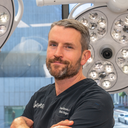Posted underBreast Augmentation q&a
Breast Augmentation and Ehlers danlos syndrome. What’s the best approach?
Looking for surgeons in the San Diego area that are familiar with Ehlers danlos syndrome (i have a mild case in comparison to others). Yes i heal slowly, but I’m covered in tattoos (full sleeves, leg tattoo, tops of feet, ankles, back, shoulders) and had no issues with healing. Skin involvement is minimal. Mostly joint stability issues. What’s the best approach? Who do i go to?
Answers (8)
From board-certified doctors and trusted medical professionals
Dr. Robert Kearney, MD, FACS

Dr. Robert Kearney, MD, FACS
Board Certified Plastic Surgeon
Answer
Dr. Ronald J. Edelson, MD

Dr. Ronald J. Edelson, MD
Board Certified Plastic Surgeon
Answer
Dr. Daniel Barrett, MD

Dr. Daniel Barrett, MD
Board Certified Plastic Surgeon
Answer
Dr. Urmen Desai, MD, MPH, FACS

Dr. Urmen Desai, MD, MPH, FACS
Board Certified Plastic Surgeon
Answer
Dr. Steve Laverson, MD, FACS

Dr. Steve Laverson, MD, FACS
Board Certified Plastic Surgeon
Answer
Dr. Tom J. Pousti, MD
Dr. Tom J. Pousti, MD
Board Certified Plastic Surgeon
Answer
Answered on Jun 17, 2022
Answer
Dr. Ronald V. DeMars, MD (Retired)
Dr. Ronald V. DeMars, MD (Retired)
Board Certified Plastic Surgeon
Answer
More Breast Augmentation Questions
See all Breast Augmentation Q&AWE SEND PRETTY
EMAILS
What’s trending? Who’s turning heads? Which TikTok myths need busting? We’ve got you. No fluff, no gatekeeping—just real talk. Get our free, unfiltered newsletter.